#Natya Shastra of Bharata
Text
Classical Dance Forms of India
Introduction:
In the rich tapestry of Indian culture, classical dance forms hold a special place, reflecting a synthesis of tradition, mythology, and artistic expression. Rooted in ancient scriptures and historical texts, these dance forms have evolved into intricate and captivating performances. One of the foundational texts guiding Indian classical dance is Bharata Muni’s Natya Shastra, which…
View On WordPress
0 notes
Text
Karanas Bharatanatyam Teachers | Karanas Bharatham

Bala Devi Chandrashekar is a Bharatanatyam Exponent and scholar, artist, choreographer and committed Bharatanatyam Teacher. Bala in an exemplary fashion follows the discerning scholarly approach of her legendary Guru Dr. Padma Subrahmanyam. Bala takes on subjects with a philosophical leaning and explores various methods through Indian classical dance to interpret spiritual concepts and strives to practice a classicism that is always contemporary in interpretation and communicates across cultures and she actively performs across the world with her own distinct style. All her production is accompanied by world-class music. As a Professor of Practice & Artistic Director of SPNAPA Academy of Performing Arts, Princeton, New Jersey, she imparts valuable knowledge to her many dedicated students. Bala Devi Chandrashekar constantly works on developing and perfecting the style that would be seamless and fluid while yet retaining the precision, power, and purity of line - typical of classical dance. As a Professor of Practice, Bala is constantly developing “Performing studies” in collaboration with Theater and Dance, History, Philosophy, Linguistic anthropology and South Asian Departments of various Universities in the United States and served as Fellow and Artist in Residence at The Carl A fields Center@Princeton University. Bala is one of the few Bharatanatyam artists worldwide to have released seven critically acclaimed Bharatanatyam dance DVD’s.
#Bharatanatyam Dancers#Bharatanatyam Exponent#Bharatanatyam USA#Bharatanatyam Teachers#Bharatanatyam Teachers USA#Karanas#Best Bharatanatyam Dancers#Natya Shastra Scholar#Bharatanatyam Karanas#Disciple of Dr Padma Subrahmanyam#Student of Dr Padma Subrahmanyam#Karanas Bharatanatyam Teachers#Karanas Bharatham#Natya Sastra in bharatanatyam#Karanas in Natyashastra#Natya Shastra of Bharata
0 notes
Text
Female Artistes in the Anthapuram
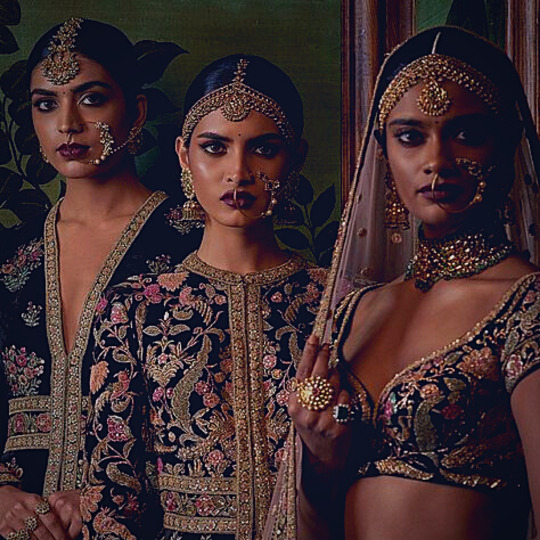
━━━━━━━━━━━━━━━━━━━━━━━━━━━━━━━
शिल्पकारिणी Shilpakarini - Crafts-woman
Women who are conversant with various arts and skilled in different crafts, branches of the art of perfume-making, are skilled in different modes of painting, know all about the comfort of beds, seats and vehicles.
नाटकीया Naatakiya - Actress
Women who have physical beauty, feminine charm, patience, and who possess soft, sweet and charming voice, and varying notes in her throat, and who are experts in the representation of passion, and feeling, are skilled in playing musical instruments, have a knowledge of notes, rhythm, and are associated with the master of the dramatic art, and skilled in acting.
नर्तकी Narthaki - Dancer
Women who have beautiful limbs, are clever, courteous, always bold, free from indolence, inured to hard work, capable of various arts and crafts, skilled in dancing and songs, who excel by their beauty, youthfulness, brilliance and other qualities.
━━━━━━━━━━━━━━━━━━━━━━━━━━━━━━━
This list is based on translations made to English from the Natya Shastra by Bharata Muni in Sanskrit. This information is given in the Chapter 34, “Types of Characters”. Some of the information has been removed and changed as it was meant to describe characters belonging to these roles and not the actual women.
20 notes
·
View notes
Text
Bharata Natyam Dance
Bharata natyam, the principal of the main classical dance styles of India. It is indigenous to the Tamil Nadu region and prevalent in southern India. Bharata Natyam serves the expression of Hindu religious themes and devotions, and its techniques and terminology have been traced back to ancient treatises such as the Natya-shastra, by the Brahman sage and priest Bharata. Bharata Natyam was originally performed exclusively by female temple dancers and was not brought to the stage for public performance until about 1930.
Bharatanatyam highlights the beauty of strong lines leading out from the dancer's body and is embellished with intricately expressive hand gestures and elaborate storytelling through facial expressions. Kathak is characterised by fluid body movements, complex patterns of footwork, fast turns and sudden stillness. A precise interaction with classical Indian music from South and North India respectively characterises both these dance genres.
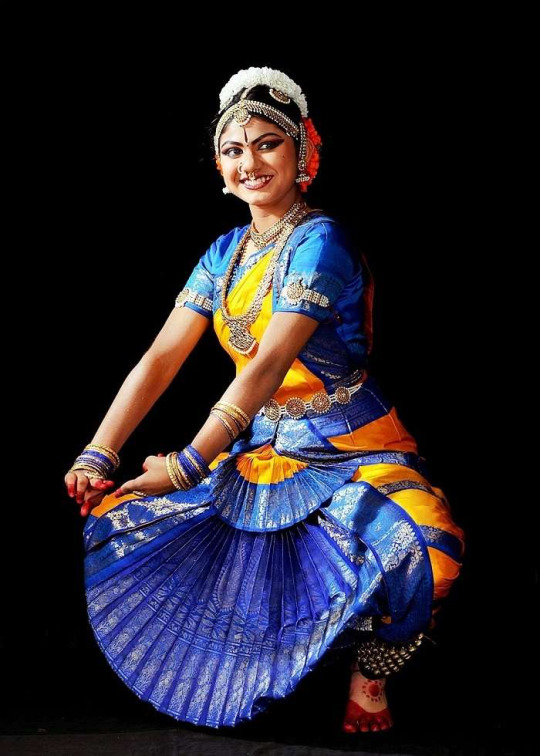

2 notes
·
View notes
Photo

Bharatanatyam- is a classical dance from South India, Ragunath Venkatraman
Bharatanatyam- is a classical dance from South India Bharatanatyam (pronounced ba-rata-na-tiam) is a classical dance style from South India performed by both men and women. It is called the "fifth veda", and is widely considered to be the oldest dance form in India. It is one of the most highly refined developed systems of dance, and is recorded as far back as the 9th century, although it was known as Sadir until the early 1900’s. The name Bharatanatyam is explained two different ways. The first is that it is composed of related words: • BHAva (expression) • RAga (melodic mode) • TAla (rhythm) • NATYAM (dance) The second is that the name comes from a combination of the name of the sage Bharata Muni who wrote the "Natya Shastra" the principles of this dance, and the word for dance “natyam”. Bharata is believed to have lived between the 1st and 2nd century AD. He wrote a detailed account of the art of dance, and many people credit his work for the fact that Bharatanatyam remains much the same today as it was long ago. This painting has a mix of vibrant colours and creative use of shapes and varied patterns and techniques. Size: 24”x18”. New2014. Unframed. Rolled. Original painting oil on canvas. Signed. PAYMENT: Through PAYPAL SHIPPING: shipping worldwide within 7 working days after receiving the payment. PACKING: All our paintings are professionally packed in the great care to ensure safe delivery thro International courier.
https://www.saatchiart.com/art/Painting-Bharatanatyam-is-a-classical-dance-from-South-India/34395/2185676/view
2 notes
·
View notes
Text
Iris Publishers - World Journal of Yoga, Physical Therapy and Rehabilitation (WJYPR)
Using Yoga Mudras in Yoga Sessions Increases the Efficacy of The Yoga Practice

Yoga Mudras are hand gestures which were originally described by Sage Gheranda in the Gheranda Samhita. This late 17th century text is an important classic text of Yoga. Gheranda Samhita is the original source for most of the Asanas, Mudras, Pranayama, and Shatkarma practiced now in Yoga. Mudras means gestures, these can be Hand gestures (Hasta Mudra), or gestures made by head (Mana mudra) or the whole body (Kaya mudra) as in the yoga poses or gestures made in dance forms like Bharatnatyam dance form of India (Natya Mudra). Bandhas or locks which are practised in Yoga can also be considered as Mudras.
Mudras should be made an integral part of a yoga practice session. As described in the Natya Shastra*which is an ancient text of art form compiled in the 500 BCE by Sage Bharata, it reinforces the importance of Mudras by quoting - “Where the hand is, eyes follow, where the eyes go, mind follows, where the mind is, there is the feeling, where there is feeling, there is rasa (mood or taste or flavor)”. This powerful quote emphasizes the efficacy of holding a certain mudra while performing pranayama and yoga asanas.
When we hold a certain mudra, it sets the intention or Sankalpa (determined intention) to the yoga practise. This in turn helps to steady the mind and focus on the intention and perform the whole sequence of yoga session. Steadying the mind in a yoga session is of prime importance to get the ultimate value of a proper yoga routine. When a certain mudra is held while doing a yoga pose, the pranic energy during the flow of the pose is directed towards the intention of the mudra and this enhances the focus of the pranic energy towards that particular function of the body or mind which is being addressed by the mudra. It is as if the mudra or the hand seal or gesture establishes a circuit or channel for the pranic energy to flow in an organized way and awaken all the chakras, koshas and the kundalini. The positive outcome of that yoga pose is therefore intensified due to the proper usage of mudra while performing the pose with the proper breathing technique or pranayama.
Mudras have direct correlation with acupuncture meridians of some of the vital organs of the body viz heart, small intestines, brain and lungs, which are described in the Traditional Chinese Medicine. From the perspective of Vedic Astrology, each finger represents one element of the Universe. The thumb represents Fire elements, Index finger represents the Air element, Middle finger represents Space element, Ring finger represents the Earth element, and the Little finger represents the Water element. So, in certain Mudras, depending on which meridian is stimulated and which element is stimulated the Pranic Energy flows along those channels and builds the health of the respective organs and builds the health of the respective elements in the body.
For the purpose of our article, we can discuss a few mudras which can be easily used by everyone while doing their yoga routines.
Gyan mudra
When we touch the tips of the Index Finger with tips of our thumb, we are holding the Gyan Mudra. Gyan means knowledge. This mudra enables proper concentration and sharpens our memory and deepens our insight into a particular focus we have towards a part or function of the body or the mind. Holding this Mudra during Meditation thus enables expanding our consciousness infinitely.
Dhyana mudra
When the right-hand rests on the palm of the left hand, with tips of the thumbs touching each other, we call it Dhyana mudra. Very commonly used mudra for mindful meditation. It improves the focus or attention to obtain a balance in all the energies in the body and the mind. Buddha statue is usually found holding this mudra while in meditation.
Surya mudra
Surya means the Sun. This mudra has the power to increase the fire element in our body and mind. Place the thumb on the bent ring finger and stretch the other fingers upward. This removes the obstacles in the path of concentration and focus and enables the prana to flow through sharply in all channels.
Prana mudra
This mudra is done by touching the tips of the Thumb to tips of the ring finger and the little finger, while the rest two fingers are stretched upwards. This mudra awakens the dormant pranic energy in the body and mind and propels it to move towards awakening. It therefore enlivens and energises us.
Apana mudra
This is done by bending the thumb, middle and ring fingers and bringing their tips together, while the index and little finger are stretched upwards. This mudra is called Apana or cleansing mudra. It removes the negative energy from our body and mind and cleanses the channels, thus improving more focus of prana into the positive direction.
Thus, you see mudras are simple gestures of hand which can be easily combined into a yoga practice session, provided proper pranayama technique and proper yoga asana is learnt and practiced. Mudras can be efficiently applied in a yoga session, only after the student in the path of yoga has already mastered learning the pranayama, pratyahara and asanas. It is therefore essential to start our yoga routine with a proper pranayama holding the proper mudra as per the intention of the student and then flow into various yoga poses. While holding the breath in those yoga poses, the student can perform the mudras to intensify the focus of that particular yoga pose. This way mudras can be incorporated into a yoga routine with great benefits like attaining deeper relaxation and inner calm and balance.
To read more about this article: https://irispublishers.com/wjypr/fulltext/using-yoga-mudras-in-yoga-sessions-increases-the-efficacy-of-the-yoga-practice.ID.000511.php
Indexing List of Iris Publishers: https://medium.com/@irispublishers/what-is-the-indexing-list-of-iris-publishers-4ace353e4eee
Iris publishers google scholar citations: https://scholar.google.co.in/scholar?hl=en&as_sdt=0%2C5&q=irispublishers&btnG=
#International of Yoga#Journal of Rehabilitation#journal of yoga#World Journal of Physical therapy and Rehabilitation#journal of physical therapy
1 note
·
View note
Text
Dance : In Hindu Civilization
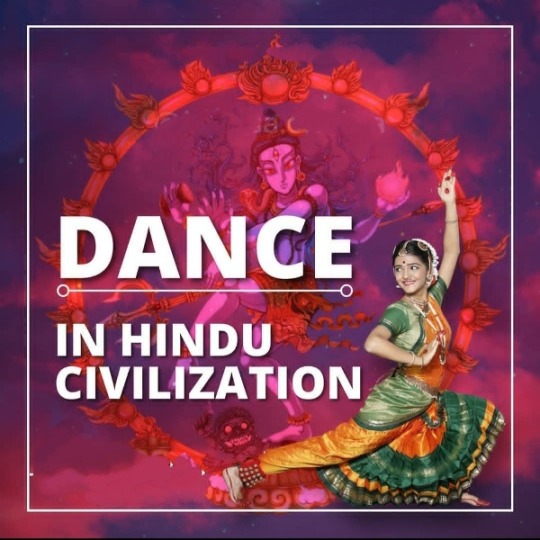
In Hindu traditions, dance is believed to have been conceived by Brahma. Brahma inspired the sage Bharata Muni to write the Natya Shastra, a treatise on performing arts, from which a codified practice of dance and drama emerged.

Bharata Muni used pathya (words) from the Rigveda, abhinaya (gestures) from the Yajurveda, geet (music) from the Sāmaveda and rasa (emotions) from the Atharvaveda to form the Natyaveda (knowledge about dance & drama).
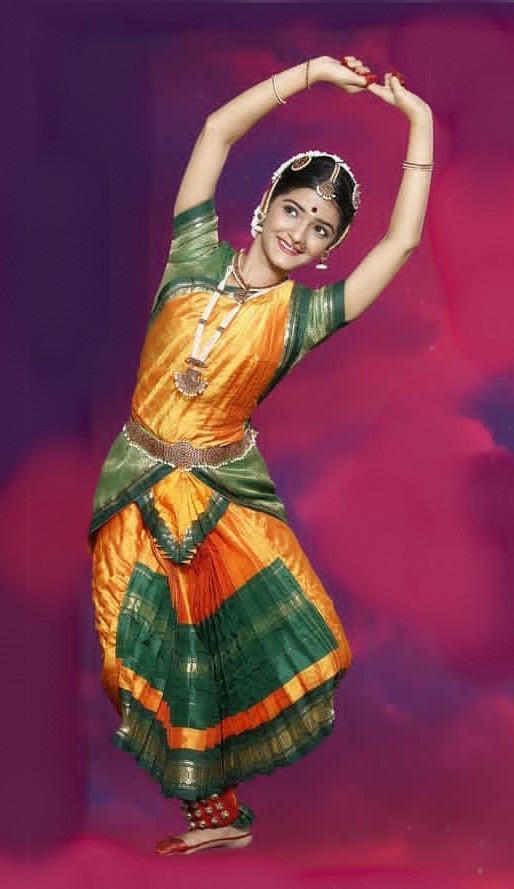
Dancers usually performed in temples, on festive occasions and seasonal harvests. Dance was also performed on a regular basis before deities as a form of worship. Even today deities are invoked. Read more
through rels folk dance forms from ancient times
1 note
·
View note
Photo

Augury of the Crow (Vasakasajja Nayika) वासकसज्जा नायिका, India, c. 1800
Cleveland Art Museum
Provenance: Bequest of Mrs. Severance A. Millikin 1989
21.4 x 14.5 cm (8 7/16 x 5 11/16 in.)
The Ashta-Nayika is a collective name for eight types of nayikas or heroines as classified by Bharata Muni (भरत मुनि) in his Sanskrit treatise on performing arts - Natya Shastra नाट्य शास्त्र,. The eight nayikas represent eight different states (avastha) in relationship to her hero or nayaka. As archetypal states of the romantic heroine, it has been used as theme in Indian painting, literature, sculpture as well as Indian classical dance and music.
[text source: @wikipedia]
10 notes
·
View notes
Text
Kathakali - The Grand Spectacle of Kerala
Kathakali is a profoundly stylised old style move show portrayed by its alluring make-up of its characters, expound outfits, definite motions and very much characterized body developments introduced in line with the grapple playback music and going with percussion. It began in the territory of Kerala during the sixteenth century AD, roughly somewhere in the range of 1555 and 1605. Kathakali has experienced fast updation and enhancements throughout the years.
The fundamental rights of a fruitful Kathakali entertainer are his aptitudes of fixation and physical endurance. Imperative endurance to last an entire night of thorough execution is picked up from controlled preparing dependent on Kalaripayattu, the old military craft of Kerala. This preparation readies an on-screen character for his requesting job. The preparation can frequently keep going for 8-10 years, and is escalated. The serious Kalaripayattu preparing has additionally subliminally impacted the non-verbal communication of Kathakali characters.
Historical underpinnings:
The name Kathakali gets from the Malayalam words "katha" (story) and "kali" (which means: play or execution).
Brief History:
As indicated by legends, Kathakali began from a forerunner move show structure called Ramanattam and owes a considerable lot of its exhibitions to Krishnanattam. To put it plainly, these two forerunning structures to Kathakali managed introducing accounts of the Hindu Gods Rama and Krishna (both are natural appearances of the Preserver among the Hindu trinity-Vishnu).
Legend has it that Kottarakkara Thampuran (1555-1605) (leader of the south Kerala area of Kottarakkara) formed most plays dependent on the Ramayana that in the long run prompted the development of Kathakali. In spite of the fact that Ramanattam as a work of art is wiped out, its accounts keep on living as a piece of Kathakali.
Kathakali is the consequence of effective amalgamation from different artistic expressions. It imparts likenesses to Krishnanattam, Koodiyattam (a Sanskrit dramatization execution of Kerala) and Ashtapadiyattam (an adjustment of twelfth century melodic called Gitagovindam). It likewise joins a few components from other conventional ceremonial works of art like Mudiyettu, Thiyyattu, Theyyam and Padayani other than a minor portion of society expressions like Porattunatakam.
Kathakali melodies are rendered in Manipravalam-which is a blend of the traditional language Sanskrit and neighborhood language Malayalam. Despite the fact that a large portion of the melodies are set in ragas dependent on the microtone-overwhelming Carnatic music, there is an unmistakable style of plain-note interpretation, which is known as the Sopanam style. This normally Kerala style of version takes its underlying foundations from the sanctuary melodies which used to be sung (proceeds even now at a few sanctuaries) when Kathakali was conceived.
The characters of Kathakali show up with vigorously painted faces and expand outfits. The movement is profoundly best in class (principally created Kaplingad Narayanan Namboodiri - 1739-1789) and authorizes stories transcendently from the Hindu sagas. Despite the fact that Kathakali was customarily been acted in sanctuaries and castles,Alex Kime Chicago over the previous century it has likewise discovered settings in post-reap paddy fields just as proscenium phases of open corridors/auditoria. Kathakali is a visual treat and its green painted entertainer has gotten interchangeable with the raised culture of Kerala.
Noticeable highlights of Kathakali:
Kathakali comprises of five old style components of compelling artwork:
Articulations (Natyam, the segment with accentuation on outward appearances)
Move (Nritham, the segment of hit the dance floor with accentuation on mood and development of hands, legs and body)
Establishment (Nrithyam, the component of dramatization with accentuation on "mudras", which are hand signals)
Tune/vocal backup (Geetha)
Instrument backup (Vadyam)
Kathakali plays
Generally there are 101 traditional Kathakali stories. The most usually organized stories among them may associate with 30-40. In those occasions when amusement media was amazingly constrained, Kathakali exhibitions were intended to last an entire night. We may state it might have evoked the reaction of a contemporary live performance.
Execution
Kathakali in its most flawless structure is acted before the immense Kalivilakku (kali importance move or execution and vilakku meaning light). The light was lit with a thick wick fuelled by coconut oil. This light was the single wellspring of brightening when the plays used to be performed inside sanctuaries, royal residences or homes of aristocrats and blue-bloods. This aided in making a feeling of wonderment and riddle and helped the entertainer misrepresent the characters he played. It was conceivably one of the principal compelling employments of light to highlight the characters and make a display.
Kathakali is instituted with the backup of music (geetha) and instruments (vadyam). The percussion instruments utilized are Chenda, Maddhalam and Edakka. The lead artist is classified "Ponnani" and his devotee is designated "Shingidi". The lead artist utilizes the "Changala" (gong made of chime metal, which can be hit with a wooden stick) to direct the Vadyam and Geetha segments, similarly as a conduit utilizes his wand in western traditional music and the Shingidi utilizes the "Elathalam" (a couple of cymbals) to add a variety to the music. Most music is customarily framed in gatherings of up to 14 individuals. Be that as it may, typically the melodies are formed with more than 20 individuals.
The distinctive element of Kathakali is that the entertainers never talk yet use hand signals, articulations and cadenced moving rather than discourse (however for two or three uncommon characters). The story is established simply by the developments of the hands (called mudras or hand motions) and by outward appearances (rasas) and substantial developments. The articulations are gotten from Natya Shastra (the tome that manages the study of articulations) and are arranged into nine as in most Indian old style fine arts. Artists additionally experience exceptional practice meetings to learn control of their eye developments.
Kathakali execution rotates around 24 essential mudras - the change and mix of which would include a piece of the hand motions stylish today. Each can be separated again can be grouped into 'Samaana-mudras'(one mudra representing two substances) or "Misra-mudras" (both the hands are utilized to show these mudras). The mudras are a type of gesture based communication used to recount to the story.
The fundamental outward appearances of a Kathakali craftsman are the 'Navarasams' (Nine tastes or articulations). The Navarasams are: Sringaram (love), Hasyam (scorn, humor), Bhayanakam (dread), Karunam (sentiment), Roudram (outrage, rage), Veeram (valor), Beebhatsam (sicken), Adbhutam (wonder, awe), Shantam (serenity, harmony).
Kathakali has an intricate make-up code. The make-up might be characterized into five essential sets to be specific Pachcha, Kathi, Kari, Thaadi, and Minukku. The contrasts between these sets lie in the prevalent hues that are applied on the face. Pachcha (which means green) has green as the prevailing shading and is utilized to depict honorable male characters that are said to have a blend of "Satvik" (devout) and "Rajasik" (regal) nature. Rajasik characters having a detestable streak ("tamasic"= fiendish) - no different they are screw-ups in the play, (for example, the evil spirit ruler Ravana) - and depicted with dashes of red in a green-painted face. Too much underhandedness characters, for example, evil presences (absolutely tamasic) have an overwhelmingly red make-up and a red facial hair. They are called Chuvanna Thaadi (Red Beard). Tamasic characters, for example, ignoble trackers and woodsmen are spoken to with a transcendently dark make-up base and a dark facial hair and are called Kari/Karutha Thaadi (which means dark whiskers). Ladies and religious zealots have glistening, yellowish appearances and this semi-sensible classification shapes the fifth class. Moreover, there are alterations of the five fundamental sets portrayed better than as Vella Thadi (white whiskers) used to delineate Hanuman (the Monkey-God) and Pazhuppu, which is significantly utilized for Lord Shiva and Balabhadra.
Minukku
Minukku is the cleaned assortment of facial make-up comprising in smoothening the entertainer's face with a covering of a blend of yellow and red shades. The arrangement gets 'a self' (or normal skin) appearance shading. It mirrors the characters normally found in Brahmins, Ascetics and Virtuous ladies. The eyes and eye-lashes are painted and shapes lengthened with the dark unguent and oily collyrium. Some of the time the face is enriched with white or cream shading specks, running from the cheeks to the front head in a bow-shape. The lips are blushed and the temple is enriched with a station mark. This shading plan serves to give a representative sparkle of devotion to a fan character. Ladies job types are given sensitive contacts of the make-up.
Pachcha
Pachcha delineates a dark green face. The endorsed jobs are Gods, commended legendary saints, and ethical personages, representing internal refinement balance, chivalry and good greatness. This incorporate legends of a play and honorable characters, Indra, Krishna, Rama, Lakshmana, Bharata, Sathrugnan, Harishchandra and Nala. The forward portion of their appearances is given smooth dark green base on which chuttis (white rice-glue bends) run from the focal point of the jawline, covering the lower jaw, to either side of the face. The eyes and the eye-lashes are painted dark and the lips splendid red. It expect the state of a wide cutting edge saber or of a broad bend of a bow. The brow, over the tie formed painted segment, is secured by a red lace of the overlaid head gear.
1 note
·
View note
Text
Disciple of Dr Padma Subrahmanyam | Student of Dr Padma Subrahmanyam
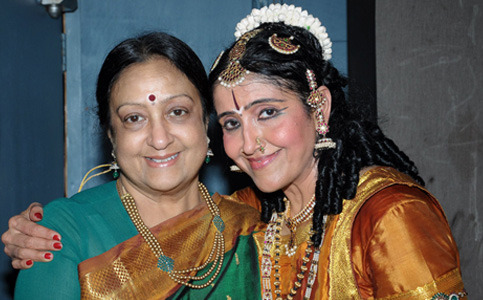
Bala Devi Chandrashekar is a Bharatanatyam Exponent and scholar, artist, choreographer and committed Bharatanatyam Teacher. Bala in an exemplary fashion follows the discerning scholarly approach of her legendary Guru Dr. Padma Subrahmanyam. Bala takes on subjects with a philosophical leaning and explores various methods through classical dance to interpret spiritual concepts and strives to practice a classicism that is always contemporary in interpretation and communicates across cultures and she actively performs across the world with her own distinct style. All her production is accompanied by world-class music. As a Professor of Practice & Artistic Director of SPNAPA Academy of Performing Arts, Princeton, New Jersey, she imparts valuable knowledge to her many dedicated students. Bala Devi Chandrashekar constantly works on developing and perfecting the style that would be seamless and fluid while yet retaining the precision, power, and purity of line - typical of classical dance. As a Professor of Practice, Bala is constantly developing “Performing studies” in collaboration with Theater and Dance, History, Philosophy, Linguistic anthropology and South Asian Departments of various Universities in the United States and served as Fellow and Artist in Residence at The Carl A fields Center@Princeton University. Bala is one of the few Bharatanatyam artists worldwide to have released seven critically acclaimed Bharatanatyam dance DVD’s.
#Bharatanatyam Dancers#Bharatanatyam Exponent#Bharatanatyam USA#Bharatanatyam Teachers#Bharatanatyam Teachers USA#Best Bharatanatyam Dancers#Natya Shastra Scholar#Bharatanatyam Karanas#Disciple of Dr Padma Subrahmanyam#Student of Dr Padma Subrahmanyam#Karanas Bharatanatyam Teachers#Karanas Bharatham#Natya Sastra in bharatanatyam#Karanas in Natyashastra#Karanas#Natya Shastra of Bharata
0 notes
Text
राजपत्नी Raja Patni - The Wives of the King
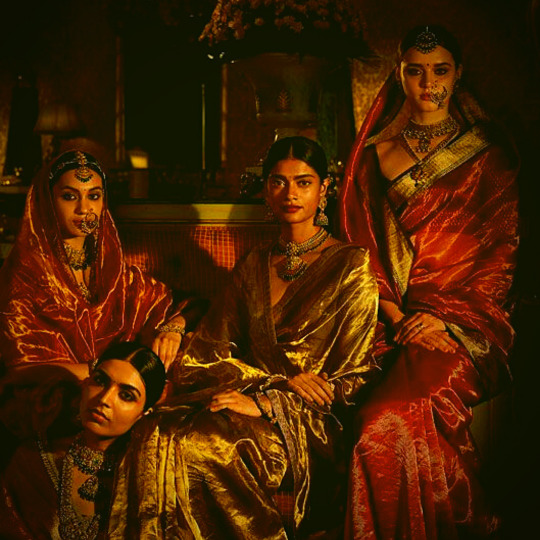
━━━━━━━━━━━━━━━━━━━━━━━━━━━━━━━
महिषी Mahishi - Chief Queen
The wife who has been consecrated on her head, is of high birth and character, possessed of accomplishments; advanced in experience, is always engaged in propitiatory rites for the good of the royal husband.
Addressed as - Mahadevi “Great Lady”
राणी Rani - Junior Queens
The wives who have all the respected qualities except that they are denied proper consecration, and who are proud and of royal descent, are pure and always brilliantly dressed .
Addressed as - Devi “Lady”
स्वामिनी Swamini - High-born Wives
The wives who are the daughters of generals, or ministers or of other employees when they (i.e. their daughters) are elevated by the king through bestowal of affection and honour, and become his favourite due to good manners and physical charm, and attain importance through their own merits.
Addressed as - Swamini “Madam”
स्थायिनी Sthayini - Ordinary Wives
The wives who have physical charm and young age, is violent in sexual acts, full of amorous gestures and movements, expert in the enjoyment of love, always alert and ready to act, free from indolence and cruelty, and capable of showing honour to person according to their status.
Addressed as - Bhattini “Mistress”
भोगिनी Bhogini - Concubines
The ladies who are honest and clear in their dealings, exalted, always brilliant with their scents and garlands, demand no honour, and are sober, humble, and forbearing.
Addressed as - Bhattini “Mistress”
━━━━━━━━━━━━━━━━━━━━━━━━━━━━━━━
This list is based on translations made to English from the Natya Shastra by Bharata Muni in Sanskrit. This information is given in the Chapter 34, “Types of Characters”. Some of the information has been removed and changed as it was meant to describe characters belonging to these roles and not the actual women.
24 notes
·
View notes
Text
dance academy yamunanagar
India has a huge number of year old custom of expressive arts and traditional and people music and moves. A portion of the world-popular move frames that started and developed in India are Bharatnatyam, Kathak, Kathakali, Kuchipudi, Manipuri, Mohiniattam and Odissi. All these move shapes use essentially the equivalent 'mudras' or indications of hand as a typical language of articulation and were initially performed in the sanctuaries to engage different Gods and Goddesses.
Today, Dance is extremely prevalent in our reality. yet in addition part of an Indian culture
Move Mantra Academy, the national foundation for performing expressions in India, perceives eight conventional moves as Indian established dances.in India Dance has been a significant piece of service, customs, festivities and amusement since before the introduction of the most punctual human developments. Move is a significant part of some religious ceremonies Ritual moves may likewise be performed in sanctuaries and amid religious celebrations. Move, the development of the body in a cadenced manner, more often than not to music and inside a given space, to express a thought or feeling, discharging vitality, or just taking savor the experience of the development itself. Moving is a rich, and ordinary development, amicably made out of excellent Attitudes, and differentiated agile Posture of the Body. same like Dance mantra is a standout amongst the best foundations in Yamunanagar, That gives you best choreographers, for your occasions like yearly capacities, corporate, sangeets, youth celebrations, pre-wedding, video collections and so forth. The Dance mantra has begun in 2008 in Yamunanagar, related with NIDA ( NORTH INDIA DANCE ASSOCIATION) Which furnishes you with the best stage to investigate your ability. The MD of the organization is Mr Diwakar Vyas had involvement of 16 years. He had completed 1200 recordings melodies as an artist, 45 collections as a choreographer, 10 Bollywood films, 1000 phase appears, and some more. Presently here in Yamunanagar to impart his experience to you. Respects Dance mantra Diwakar Vyas.
A standout amongst the most essential thought processes of move is the articulation and correspondence of feeling. Individuals—and even certain higher creatures—regularly move as a method for discharging ground-breaking emotions, for example, unexpected gets to of uplifted spirits, delight, eagerness, or outrage. India has an extremely rich culture of move and music. The Classical Dances of India incorporates Bharatanatyam, the most established type of the traditional move in the nation and a standout amongst the Most Popular Classical Dance in India and old in Natya Shastra. Bharata Natyam is viewed as the most seasoned type of move. The established Indian move Bharatanatyam began from the craft of sanctuary artists in the South India province of Tamil Nadu. Bharatanatyam is a standout amongst the most prominent styles of move performed by male and female artists. Kathakali is likewise a standout amongst the most drawing in traditional Indian move dramatization performed by the well-prepared craftsman. Kathakali is started in God's very own nation Kerala in the seventeenth century and got mainstream at each side of India.
1 note
·
View note
Text
6 Benefits of Bharatanatyam – Why would it be a good idea for one to learn Bharatanatyam?
What is Bharatanatyam?
Bharatanatyam Dance Academy in Hyderabad is one of the most seasoned and the most acclaimed dance types of India. It is viewed as the mother of other traditional moves. Bharatanatyam was recently known as Sudhir Attam. The beginning of Bharatanatyam traces all the way back to Tamil Nadu and it is very nearly 2000 years of age. The dumbfounding footwork and great offers of the artists alleviate the eyes of the watchers.
A concise history of Bharatanatyam
It is accepted by the legends and numerous others that Bharatanatyam was uncovered by Lord Brahma to Bharata who encoded the dance structure in Natya Shastra. Bharatanatyam incorporates Nrita, Nritya and Nattya. Nrita incorporates unadulterated moving, developments and offers of hand and foot. Nritya contains the articulations and Nattya incorporates play. The artists are joined by music, artist and a master who leads the exhibition and coordinates the artists.
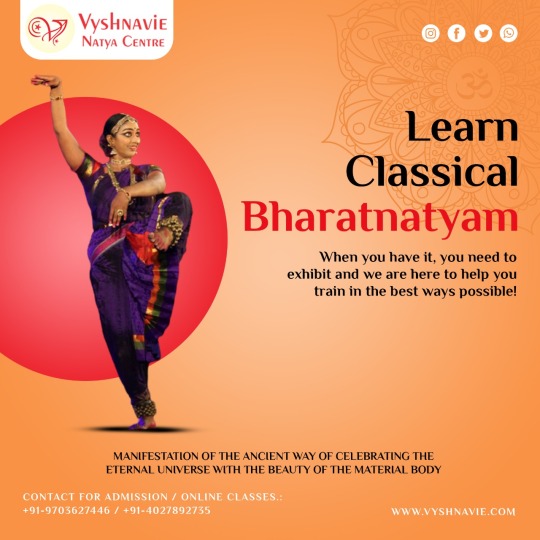
Advantages of Bharatanatyam
Bharatanatyam is an old-style dance structure which is valuable from multiple points of view. It furnishes with numerous medical advantages. Old style dance structures like Kathak, Kuchipudi, Odissi, Manipuri and Bharatanatyam are appreciated by individuals across the various conditions of the country. Old style moves have made a spot in India as well as in abroad due to its advantages to the body. The following are a portion of the advantages of Bharatanatyam.
1) Improves adaptability
Mudras are a significant piece of Bharatanatyam. They are made by various body parts that improve adaptability. Bharatanatyam is related with articulations and motions which help in conveying the message and emotions. Mudras and articulations help in chatting with the crowd through the dance and furthermore help in improving adaptability.
2) Increases endurance
Like different other dance structures, Bharatanatyam also has numerous developments which help in making the muscles solid. These body developments are now and again extreme and the stances are should have been held for certain seconds. Bharatanatyam Classes in Hyderabad is no not as much as yoga or exercise so a couple of long periods of training and development of appendages helps in boosting endurance.
3) Improves balance
Classical Dance in Hyderabad incorporates various stances, postures and developments. The distinctive body developments are called Karanas which help in improving the equilibrium of the body. There can be various stances, for example, remaining on one foot that should be hung on for a couple of moments to improve the equilibrium. Bharatanatyam is as useful to the body as yoga.
4) Provides solid heart
Moving aides in keeping your heart solid. It helps in coursing blood quicker and siphoning it. Actually, like numerous other dance structures, Bharatanatyam requests a ton of energy and eventually it builds the blood flow in the body. Dance and wellness consistently go next to each other.
5) Improves fixation
While performing Bharatanatyam, one necessity to recollect the mudras, karanas and hastas to perform well. It requires a ton of fixation and consideration regarding recall this effectively. Classical Dance Academy in Hyderabad needs to recollect various developments, steps, the musicality and beats and articulations while performing. At last, Bharatanatyam helps in improving the psychological abilities, focus and mental sharpness.
6) Different advantages of learning Bharatanatyam
Bharatanatyam requests a great deal of looks. It includes the development of eyes, eyebrows, neck and lips which make the muscles solid. The facial tissues become solid because of the consistent development of facial muscles. Various articulations are utilized in showing various emotions like bitterness, outrage, joy and so forth Bharatanatyam artists have sparkling skin and elegance in their eyes. The eyes developments help in fortifying the eye muscles.

0 notes
Photo
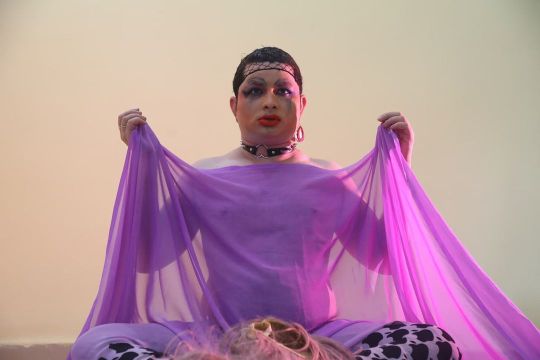
#AsthaNowYika @santoshkumar_gangala #Proshitabhartruka Proshitabhartruka (“one with a sojourning husband”) or Proshitapatika (as named by Keshavadasa) is the woman whose partner has gone away from her and does not return at all. She is depicted seated mourning the lonliness the partner has left her under, tearing apart her true self to the mirror of reflection. The artificality is gone and she is felt to be real, surrounded by her thoughts and memories of dream she weaved with a wrong person, but refusing to be consoled. she is unhidding herself, depleating the covers one by one and feeling her own skin. The Ashta-Nayika is a collective name for eight types of nayikas or heroines as classified by Bharata in his Sanskrit treatise on performing arts - Natya Shastra. The eight nayikas represent eight different states (avastha) in relationship to her hero or nayaka. As archetypal states of the romantic heroine, it has been used as theme in Indian painting, literature, sculpture as well as Indian classical dance and music. #acting #actor #actress #actorslife #film #theatre #actors #love #movie #model #art #tiktok #comedy #cinema #photography #drama #casting #movies #hollywood #instagram #bollywood #artist #music #tv #theater #singing #instagood #director (at India) https://www.instagram.com/p/CSa9y3GF_Xz/?utm_medium=tumblr
#asthanowyika#proshitabhartruka#acting#actor#actress#actorslife#film#theatre#actors#love#movie#model#art#tiktok#comedy#cinema#photography#drama#casting#movies#hollywood#instagram#bollywood#artist#music#tv#theater#singing#instagood#director
0 notes
Photo
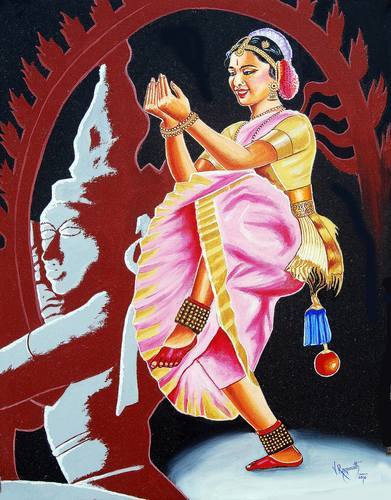
Title: Divine Dance Of Bharatanatyam, Ragunath Venkatraman
Title: Divine Dance Of Bharatanatyam BHARATANATYAM - is a classical dance from South India Bharatanatyam (pronounced ba-rata-na-tiam) is a classical dance style from South India performed by both men and women. It is called the "fifth veda", and is widely considered to be the oldest dance form in India. It is one of the most highly refined developed systems of dance, and is recorded as far back as the 9th century, although it was known as Sadir until the early 1900’s. The name Bharatanatyam is explained two different ways. The first is that it is composed of related words: • BHAva (expression) • RAga (melodic mode) • TAla (rhythm) • NATYAM (dance) The second is that the name comes from a combination of the name of the sage Bharata Muni who wrote the "Natya Shastra" the principles of this dance, and the word for dance “natyam”. Bharata is believed to have lived between the 1st and 2nd century AD. He wrote a detailed account of the art of dance, and many people credit his work for the fact that Bharatanatyam remains much the same today as it was long ago. This painting has a mix of vibrant colours and creative use of shapes and varied patterns and techniques. Size: 24”x18”. New2016. Unframed. Rolled. Original painting oil on canvas. Signed. PAYMENT: Through PAYPAL / NEFT SHIPPING: shipping worldwide within 5 working days after receiving the payment. PACKING: All our paintings are professionally packed in the great care to ensure safe delivery thro International courier.
https://www.saatchiart.com/art/Painting-Title-Divine-Dance-Of-Bharatanatyam/34395/3500095/view
0 notes
Photo
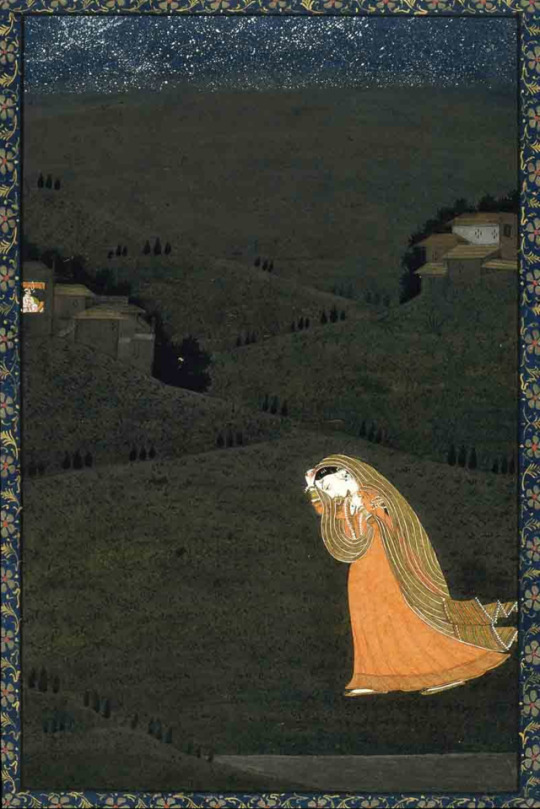
Nayika Going to Meet Lover at Night [*see below] (Krishna-abhisarika-nayika)
Ink and color on paper, c. 1815
Vinod Krishna Kanoria collection / via: Virtual Musuem of Images and Sounds
*The Ashta-Nayika is a collective name for eight types of nayikas or heroines as classified by Bharata in his Sanskrit treatise on performing arts - Natya Shastra. The eight nayikas represent eight different states (avastha) in relationship to her hero or nayaka. As archetypal states of the romantic heroine, it has been used as theme in Indian painting, literature, sculpture as well as Indian classical dance. via: Wikipedia
18 notes
·
View notes